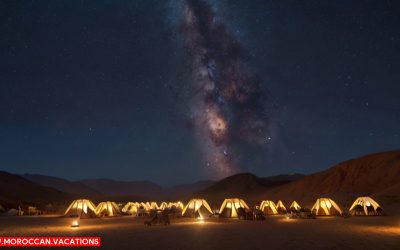Understanding Dades Valley’s Ecosystem
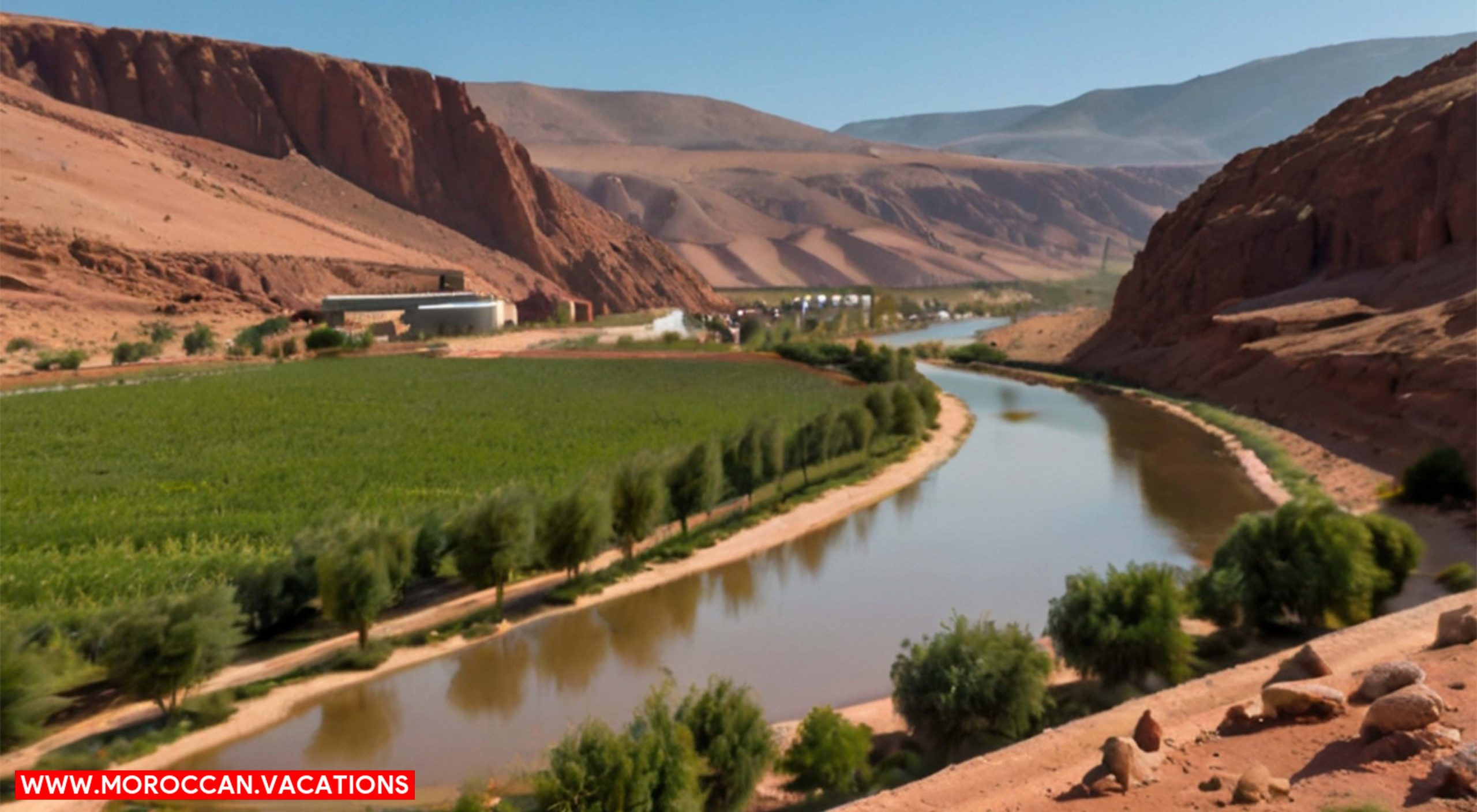

You’re stepping into Dades Valley, a threatened paradise. As you delve into this piece, you’ll uncover the relentless efforts to conserve its unique splendor. You’ll encounter diverse conservation initiatives, comprehend their ambitions, hurdles and victories, and discover the pivotal role of sustainable practices. You’re not just exploring a valley; you’re navigating the future of our planet. So, strap in and prepare for an enlightening journey into the frontlines of environmental preservation.
Diving into the heart of Dades Valley, you’ll quickly understand its unique and complex ecosystem that’s teeming with diverse plant and animal species. This Moroccan paradise is a delicate balance of life, where every creature and plant plays a crucial role.
The valley’s richness is not just about its stunning landscapes, but also about the myriad of species that call it home. From the towering Atlas Cedar to the elusive Barbary macaque, every element contributes to the ecosystem’s harmony. But don’t underestimate the importance of the smaller creatures. Even the humble dung beetle plays its part in maintaining the soil’s fertility.
Understanding Dades Valley’s ecosystem is key to its preservation. The biodiversity conservation projects in place focus not only on protecting individual species but also on maintaining the ecological balance. These initiatives are vital in ensuring that this paradise remains unspoiled for future generations.
Dades Valley’s nature conservation initiatives reflect a global shift towards sustainable practices. They highlight the importance of all life forms, no matter how small. So, when you’re roaming free in this stunning valley, remember that you’re witnessing a carefully balanced ecosystem in action.
Key Biodiversity Conservation Projects
In light of the stunning biodiversity, you’ll find several notable conservation projects actively working to safeguard the Dades Valley’s unique ecosystem. These initiatives are key in preserving paradise, employing sustainable practices, and preserving the natural beauty in Morocco.
These projects include:
- The Dades Valley Biodiversity Project: This project focuses on the protection of endemic and endangered species. The team carries out regular surveys to monitor population trends and develop conservation strategies.
- The Sustainable Agriculture Initiative: By promoting eco-friendly farming practices, this initiative works towards sustainable development in the valley, preserving the natural beauty and biodiversity.
- The Eco-Tourism Project: This initiative fosters responsible tourism, ensuring visitors respect the environment and contribute to its preservation.
- The Community Education Project: This project aims to raise awareness about the importance of nature conservation among local communities.
It’s about more than just preserving paradise; it’s about securing a future where both humans and nature can thrive. These projects are an illustration of the collective effort to maintain the delicate balance between human activity and the preservation of Dades Valley’s diverse ecosystem. So, you see, the fight for conservation is very much alive in Morocco’s Dades Valley.
Sustainable Practices in the Valley
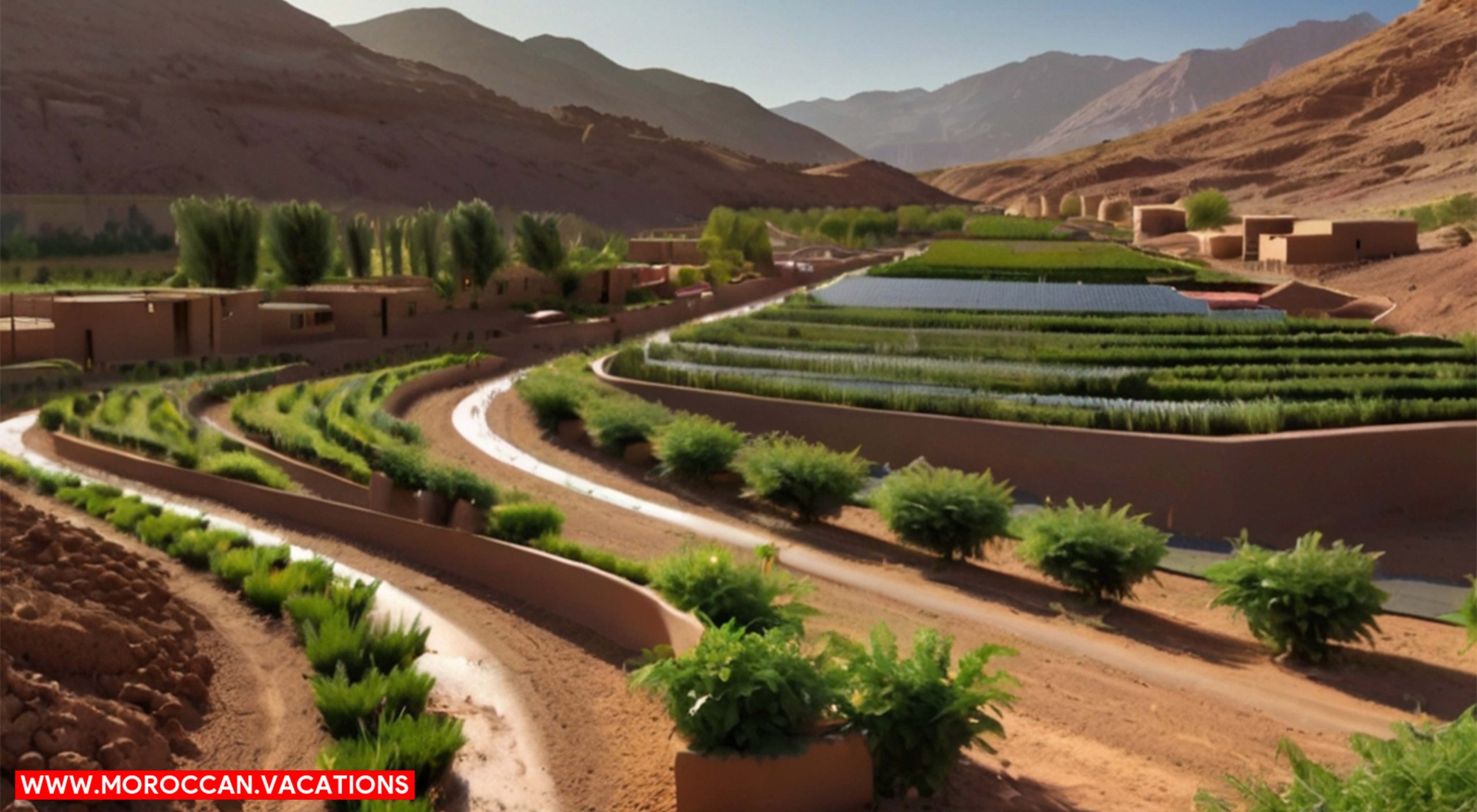

You’ll soon see how implementing water conservation, promoting sustainable tourism, and recognizing the benefits of organic farming contribute to preserving the Dades Valley. These practices not only safeguard the natural beauty of the area, but also ensure a viable future for local communities. Let’s examine how these sustainable practices are making a difference.
Implementing Water Conservation
As you explore the valley, you’ll soon realize the crucial role water conservation plays in the sustainable practices adopted here. Dades Valley is home to several water conservation initiatives, all aimed at ensuring this paradise remains untouched. These initiatives include:
- Rainwater harvesting systems, to utilize every drop of water that nature provides.
- Installing greywater systems, reusing water from baths, sinks, and washing machines for irrigation.
- Efficient irrigation methods, like drip irrigation, to minimize water waste.
- Environmental education programs, promoting water-saving habits among locals and visitors.
These efforts not only protect the valley’s natural resources but also guarantee its sustainability. By implementing these water conservation practices, you’re not just visiting Dades Valley, you’re actively helping preserve its natural beauty for generations to come.
Promoting Sustainable Tourism
Building on these water conservation efforts, let’s delve into how Dades Valley is also championing sustainable tourism practices to further protect its unique ecosystem. You’ll find initiatives promoting local culture and biodiversity, discouraging littering and non-eco-friendly practices. They’re aiming for a balance where tourism benefits the economy without compromising the environment. Trekking trails are well marked, preserving the flora and fauna from trampling. Local guides educate tourists on their role in conservation, creating a sense of responsibility. Sustainable accommodations are encouraged, reducing energy and water consumption. You’re free to enjoy the natural beauty, as long as you respect it. It’s a model for other destinations, showing how tourism can coexist sustainably with nature.
Organic Farming Benefits
Diving into organic farming, you’re not just helping the environment, but reaping significant health benefits as well. In Dades Valley, organic farming initiatives are flourishing, bolstering both the local ecosystem and community. Here’s how:
- Healthy Living: You’re consuming foods free from synthetic pesticides and fertilizers, reducing potential health hazards.
- Biodiversity: Organic farms support a rich variety of life, from insects to birds, creating a balanced ecosystem.
- Soil Preservation: Organic practices maintain soil health, essential for future farming.
- Economic Sustainability: Organic farming can provide stable income for local farmers, supporting the community’s economy.
Embracing organic farming is not just a lifestyle choice, it’s a commitment to sustainable living. In Dades Valley, you’re not just preserving paradise, you’re creating it.
The Role of Local Communities
You’ll find the role of local communities in Dades Valley’s conservation efforts both compelling and crucial. Their involvement in these initiatives not only fosters environmental stewardship but also brings tangible benefits to their lives. Let’s unpack how this symbiotic relationship works and why it’s key for sustainable nature conservation.
Community Involvement in Conservation
In your journey through Dades Valley, you’ll soon realize that local communities play a crucial role in the ongoing nature conservation efforts. Their involvement is multifaceted, ranging from participating in eco-friendly practices to spreading awareness about the importance of preserving the valley’s diverse flora and fauna.
Here are some ways the local communities contribute to conservation efforts:
- They engage in sustainable farming practices, reducing the impact on the environment.
- They participate in cleanup drives to maintain the pristine beauty of the valley.
- They educate tourists on the importance of being respectful to nature.
- They actively report any illegal activities threatening the valley’s ecosystem.
Benefits to Local Populations
Beyond their contributions to conservation efforts, these local communities reap significant benefits from the sustainable practices they’ve adopted. You’ll find that these practices not only protect the environment but also promote economic growth. Local farmers are gaining financial independence, thanks to the sustainable farming practices they’ve adopted. They’re selling their organic produce at higher prices, increasing their income. Moreover, these practices are protecting their lands from degradation, ensuring a sustainable future for their farming. In addition, local artisans are gaining recognition and finding a larger market for their products made from sustainable materials. The tourism industry is also flourishing, with eco-tourists flocking to experience the untouched beauty of Dades Valley. Thus, these practices are truly a win-win for everyone involved.
Government Policies and Initiatives
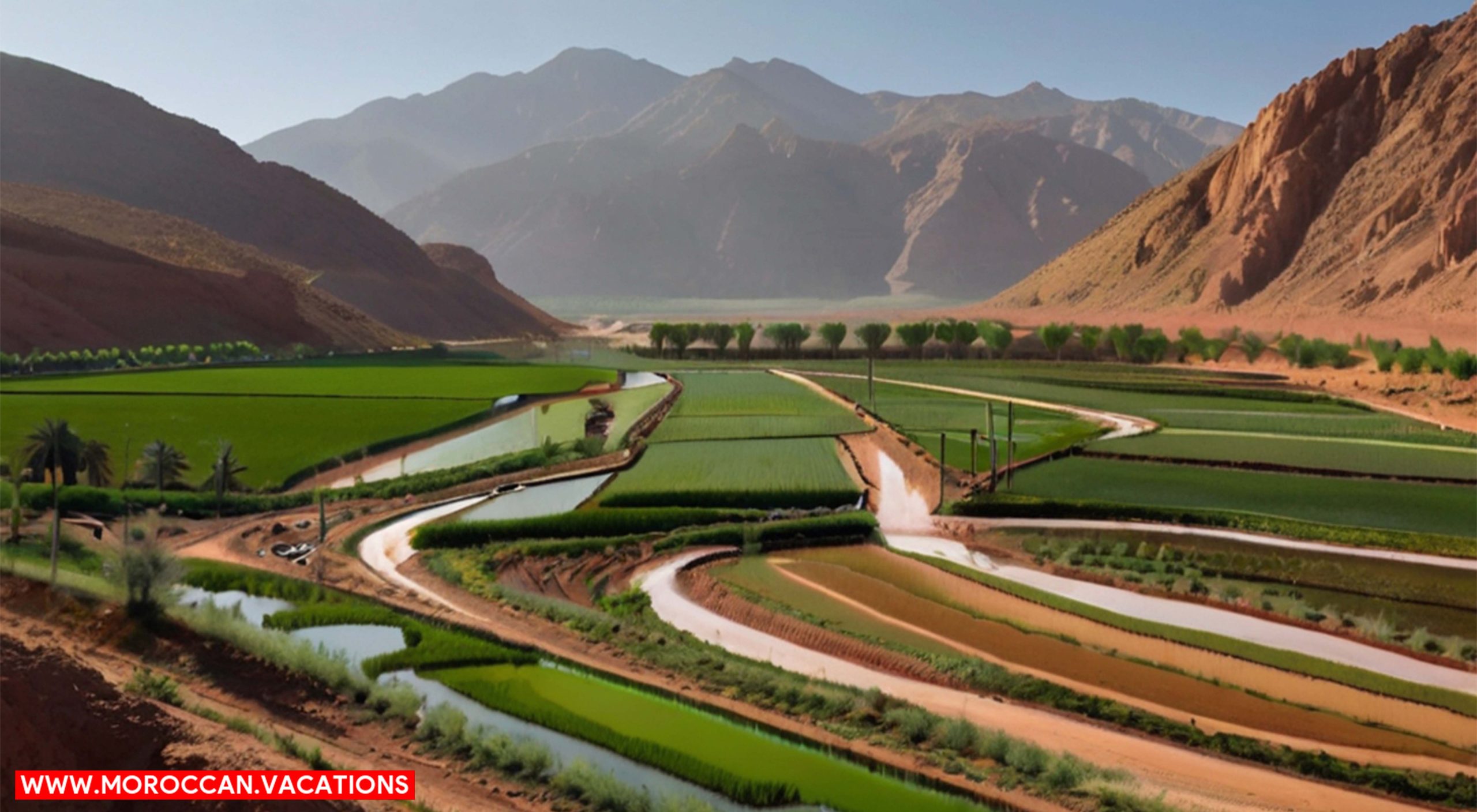

Understand how the government’s policies and initiatives play a pivotal role in the preservation efforts of Dades Valley’s natural beauty. The government has launched various actions to ensure the conservation of this picturesque region’s diverse flora and fauna.
They’ve implemented a series of measures, including:
- Instituting strict laws against illegal deforestation and hunting, ensuring the wildlife and natural resources in the valley are protected.
- Encouraging sustainable tourism, promoting eco-friendly activities that don’t harm the environment.
- Investing in research and development, advancing the knowledge of the valley’s unique biodiversity.
- Establishing educational programs to raise awareness about the importance of nature conservation among the local community and tourists.
You’ll notice that these policies not only protect the environment but also promote sustainable practices that will benefit future generations. It’s evident that the government is taking a proactive stance in safeguarding Dades Valley’s natural beauty. Yet, the success of these initiatives also depends on your understanding, cooperation, and active participation. As a lover of freedom, it’s your responsibility to respect these policies and contribute to the preservation of this paradise.
The Challenges of Conservation
Despite the numerous government initiatives, you’ll find that there are still a considerable amount of challenges to overcome in preserving Dades Valley’s natural beauty. Three main challenges emerge – lack of awareness, inadequate funding, and conflicting interests.
| Challenge | Description |
|---|---|
| Lack of Awareness | Many locals and tourists are unaware of the importance of biodiversity conservation, leading to irresponsible behavior such as littering and illegal hunting. |
| Inadequate Funding | Conservation projects require substantial funding. Without enough financial support, these initiatives can’t achieve their full potential. |
| Conflicting Interests | The valley is home to both wildlife and human activities. Balancing the needs of both can pose significant challenges. |
You must understand that conservation isn’t just about protecting wildlife, but also about creating a sustainable environment for people to coexist with nature. It is about educating individuals, securing necessary funds, and resolving conflicting interests. As we navigate these challenges, let’s remember that the freedom we desire is tied to the health of our natural world. So, join in the mission to preserve the paradise that is Dades Valley. Let’s confront these challenges together, for the sake of our future and the generations to come.
Success Stories in Dades Valley
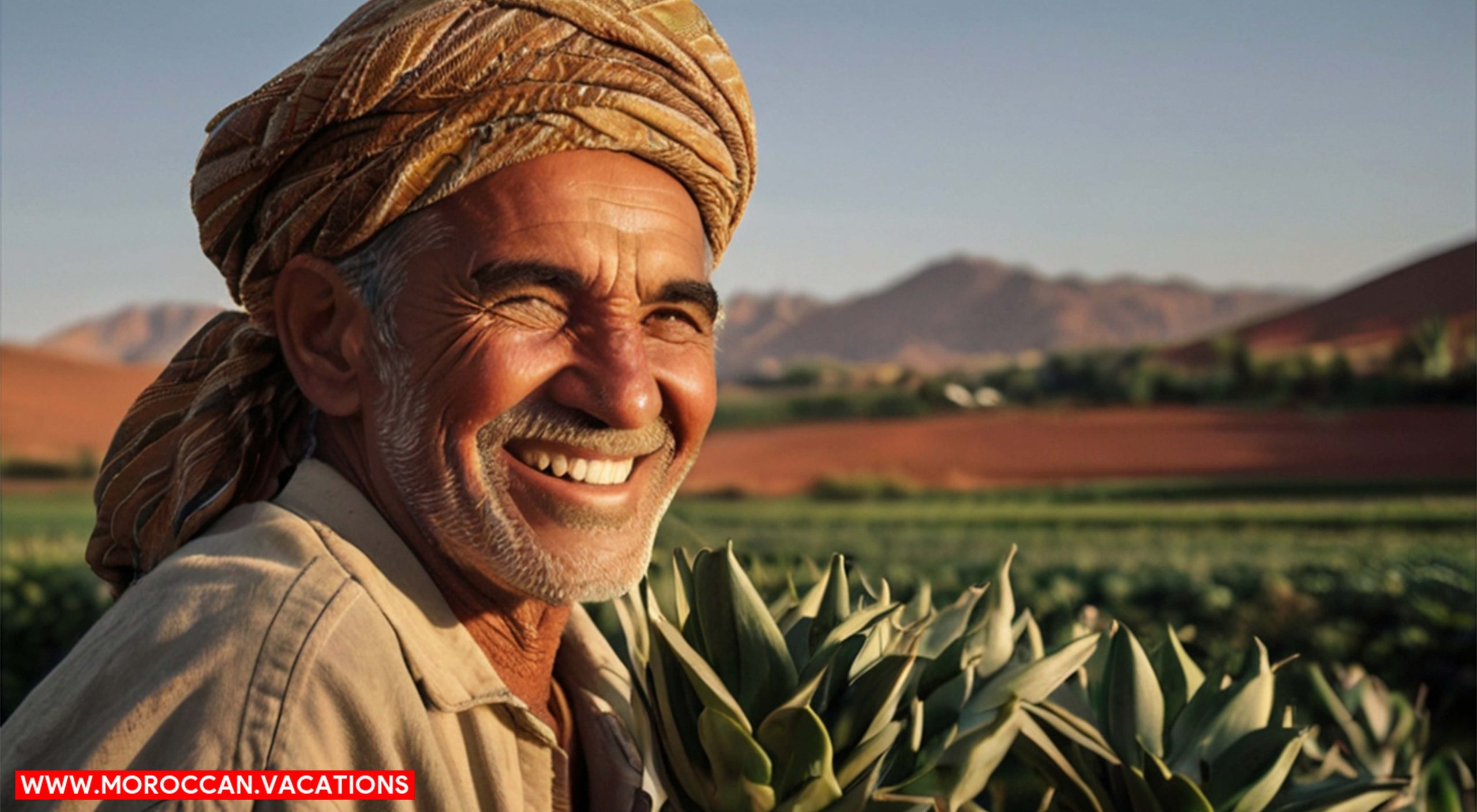

You’ll be inspired by the many success stories of nature conservation in Dades Valley, showing us that positive change is indeed possible. Community-led initiatives have made a significant difference in preserving the valley’s natural beauty and biodiversity.
Let’s take a closer look at some of these achievements:
- The Dades Valley Bird Project: This initiative successfully increased the local bird population through habitat restoration and protection measures.
- The Sustainable Farming Program: Farmers adopted eco-friendly practices, reducing environmental impact and promoting sustainable livelihoods.
- The Community Forest Management Initiative: Locals took charge of preserving the forest, resulting in decreased deforestation rates and a healthier ecosystem.
- The Wildlife Conservation Project: Endangered species such as the Barbary macaque saw a rise in numbers thanks to stringent protection measures.
These projects not only preserved the valley’s natural beauty but also empowered the local community. It’s a testament to what can be achieved when you take ownership and strive for change. The success stories from Dades Valley show you that the power to preserve nature lies in your hands. Stand up for your freedom to live in a cleaner, healthier world. It’s not just possible – it’s happening.
Prospects for Future Conservation
As we celebrate these conservation triumphs, it’s crucial to consider the future prospects for preserving the paradise that is Dades Valley. Many challenges are ahead, but with the right strategies, you can contribute to a brighter, greener future.
Foremost, it’s vital that we continue to innovate in our conservation initiatives. We’re talking about adopting cutting-edge technology for tracking wildlife, and implementing more sustainable farming practices. Your involvement in these initiatives can make a difference.
Second, we’ve got to keep educating people about the importance of conservation. You might not think your actions count, but every little effort adds up. By spreading knowledge, you’re helping to foster a culture of conservation that can last for generations.
Lastly, enforcement of existing laws protecting Dades Valley is paramount. You’re encouraged to report any harmful activities you witness. Your vigilance can help safeguard this paradise.
The future of Dades Valley hangs in the balance, but with your help, its natural beauty can be preserved. Embrace your freedom to make a difference, and together, we can ensure this paradise remains untouched for future generations. This is the promise of future conservation.
The Impact of Tourism


Over time, you’ve likely noticed the increased foot traffic in Dades Valley, and it’s important to understand the potential impact of this surge in tourism. Tourism, while contributing to the local economy, can also pose significant threats to the environment if not managed sustainably.
Consider the following impacts:
- Environmental degradation: Unregulated tourism can lead to habitat destruction, pollution, and wildlife disturbance.
- Cultural erosion: The traditional way of life can be compromised as local communities adapt to cater to tourists’ demands.
- Overcrowding: The influx of tourists can strain local resources and infrastructure.
- Economic imbalance: The wealth generated by tourism doesn’t always trickle down to the local community, leading to income inequality.
However, it’s not all doom and gloom. If managed properly, tourism can become a force for good. It can provide the funds needed for conservation efforts and create jobs for the local community. The key is to strike a balance – ensuring tourism growth doesn’t come at the expense of the natural environment. This is your paradise, after all, and it’s in everyone’s best interest to preserve it.


Samira Amrani
The passionate author behind Moroccan Vacations, sharing her expertise and love for Moroccan culture, cuisine, and travel experiences to inspire wanderlust in every reader.
Related Articles
Aromatic Gardens: Exploring Marrakesh's Fragrant Plants and Herbs
You step into a world of intoxicating scents, where every breath transports you to a realm of botanical bliss. Welcome to the aromatic gardens of Marrakesh, where nature's fragrant treasures await your exploration. From the...
The Healing Power of Nature: Therapeutic Gardens in Marrakesh
History of Therapeutic Gardens in Marrakesh Imagine stepping into a lush oasis, surrounded by vibrant colors and the soothing sounds of nature. In Marrakesh, therapeutic gardens offer a sanctuary for healing and rejuvenation. Discover the power of these enchanting...
Starry Nights: Star-Gazing in Dades Valley
Discovering Dades Valley's Night Sky Ever gazed up at the night sky and felt dwarfed by its vastness? Welcome to Dades Valley, your gateway to the cosmos. Here, you'll traverse the celestial realm, identifying constellations and spotting shooting stars. You're not...


